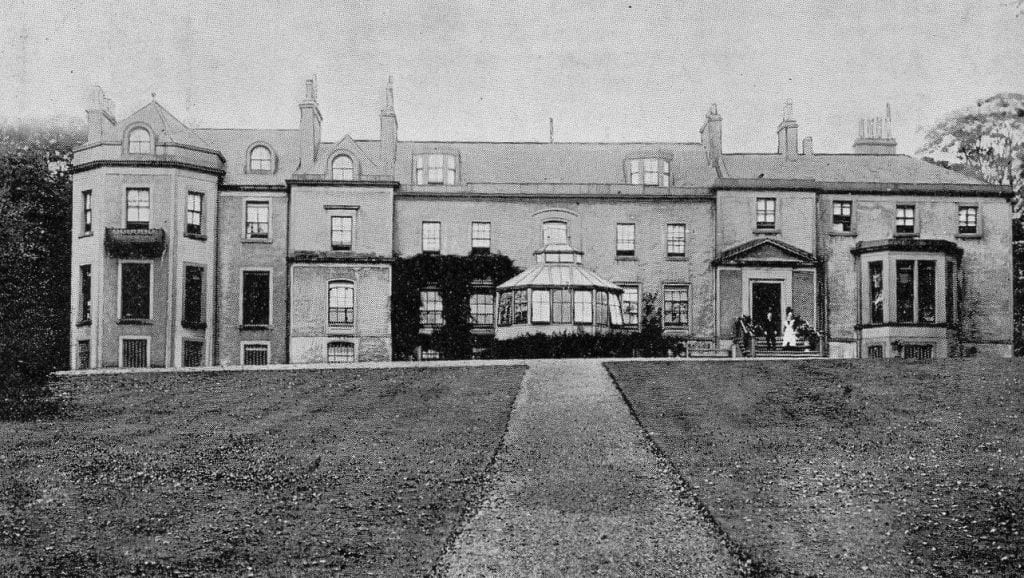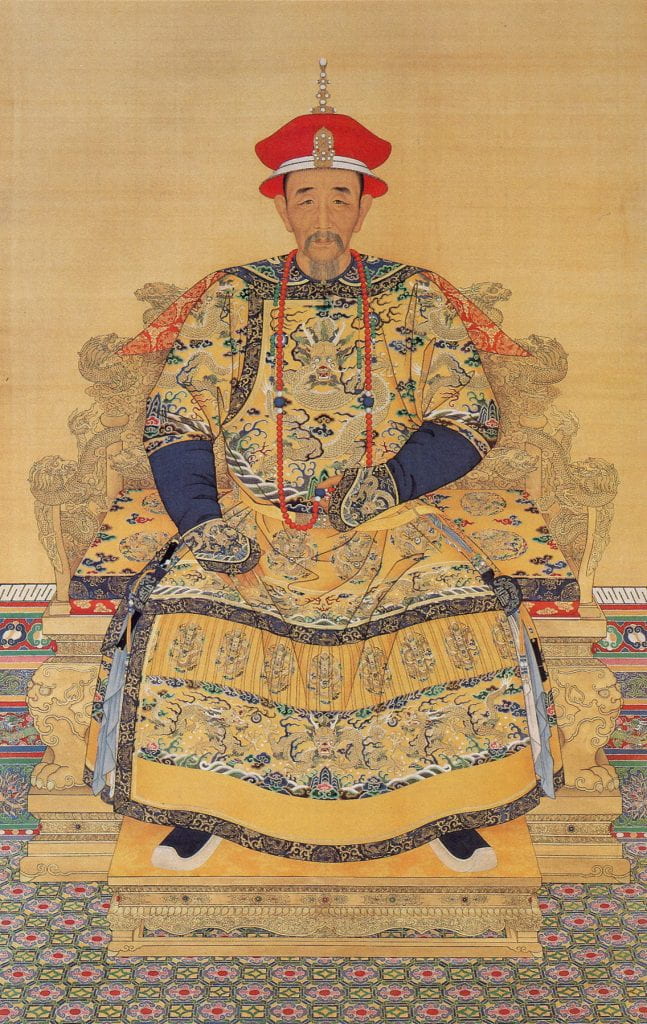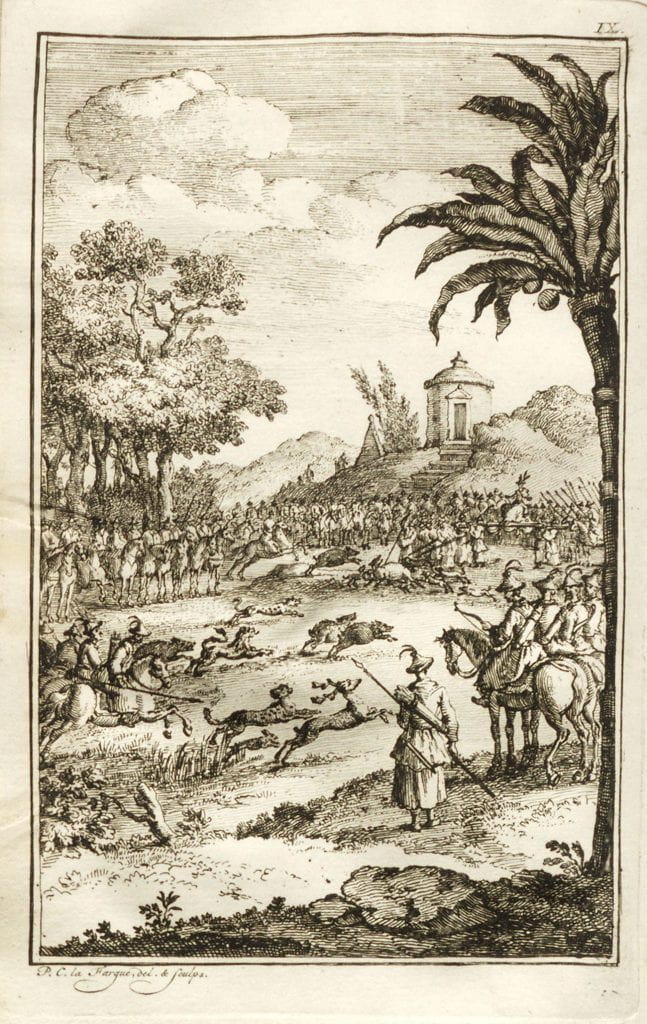By Yuval Givon
2022 marked the 300th anniversary of the return of John Bell of Antermony (1691–1780) to Scotland after a four-year journey to China. As a physician of Scottish descent, Bell settled in Saint Petersburg and participated in a number of Russian delegations across Eurasia. Despite his remarkable career, Bell has received little attention in modern Sinology. However, in the eyes of his contemporaries, Bell was a celebrated writer. In 1763 he published a travelogue that became a bestseller, recounting his Eurasian voyages, especially the overland journey to China via Siberia that he had made in his youth as part of a Russian diplomatic embassy from 1719 to 1722, which had been led by the Russian general Lev Vasilievich Izmaylov (1685–1738). Tracing Bell’s account of China and his unique perspective as a British travel writer enables us to rethink the changing attitudes of Europeans towards China during the eighteenth century.
Although its political goals were only partially achieved, the Izmaylov embassy was well received at the court of the Kangxi emperor (1654–1722), which had allowed Bell to record a detailed firsthand account of Beijing and the Qing’s imperial court in his now-lost diaries. While he stayed in the city for some three months, Bell attended several audiences with the emperor and participated in the Chinese New Year celebrations, the imperial hunt, and many other events within the Forbidden City and beyond. After years of work in the service of tsar Peter the Great (1672–1725) and a short business career in Constantinople, Bell returned to his family estate in Milton of Campsie (see Fig. 1), Scotland, where he led a life of leisure and engaged mainly in philanthropic activities and the writing of his book. Bell had never intended to publish his memoirs. The book was born of gentlemen’s conversations during which Bell entertained his friends with engaging stories from his youth, as he recalls:
About four years ago, spending some days at the house of a Right Honorable, and most honored friend, the subject of my travels took up a great part of our conversation; during which, upon his enquiring occasionally, whether I had taken any notes of the places, &c. through which I had passed in my several journies, and, upon my answering in the affirmative, he was pleased to take some pains to engage me to promise that I would collect my notes and observations, and form them into journals, as complete as the time elapsed would admit, and communicate them to the world.
There is an interval of some forty years between Bell’s journey and the publication of his travel narrative, the Travels from St Petersburg in Russia to Diverse Parts of Asia (1763). This raises some questions in terms of factual accuracy, which could explain why the book has received little attention in modern Sinology. Although many of Bell’s descriptions are highly detailed and balanced (and therefore attest to the quality of his original notes), it is also clear that the narrative is influenced by Bell’s sentimental longing for China and the adventures he enjoyed in his youth. In spite of these limitations, I argue that Bell’s narrative is an essential historical source for the study of European writing about China in the eighteenth century.
The time gap between John Bell’s journey as a young man in 1719 and the publication of his travel narrative four decades later in 1763 opens a unique prism that allows us to rethink the change in European (and particularly British) attitudes toward China. Around the middle of the eighteenth century, a shift from admiration to disparagement occurred, which is referred to as the ‘Sinophilia/Sinophobia paradigm’ in modern scholarship. Simply put, Bell recorded his impressions during times of great intellectual appreciation of Chinese civilization, but his book was released into an environment which already became highly skeptical. British travel literature in particular, which eighteenth-century readers saw as both empirical and objective, cast China in the most negative manner, emphasizing the weakness, stasis, and immorality of its inhabitants.

The first signs of British skepticism towards China appeared already in the early decades of the eighteenth century. In the Further Adventures of Robinson Crusoe (1719), Daniel Defoe (1660–1731), whose novels were inspired by his career as a merchant, belittled the Chinese culture and economy by comparing them to Europe. He also dismissed the Great Wall – the eminent symbol of Chinese culture – as “this mighty nothing, called a wall.” His protagonist, Robinson Crusoe, describes the Chinese people as a “contemptible herd or crowd of ignorant, sordid slaves.” Although he never visited China in person, Defoe’s imagination “almost set the tone of the eighteenth-century English criticism of China,” as Qian Zhongshu notes.
Defoe’s negative depictions were reinforced by a growing number of eyewitness accounts of British travelers, who severely criticized China. They contradict the positive impressions that had been conveyed to Europe by Jesuit missionaries during the seventeenth century. Through these travelers’ accounts, the Chinese people were presented not only as less talented than the Europeans, but also as manipulative and deceitful. The editor of Commodore George Anson’s (1697–1762) widely-circulated travel account, A Voyage Round the World (1749), remarked that it was “endless to recount all the artifices, extortions and frauds which were practiced on the Commodore and his people, by this interested race.”
Besides reflecting the experience of individual British travelers, these voices disclose some of the profound transformations in British culture and the emergence of a new national sentiment in the middle of the eighteenth century. The rise of Britain as a global trade empire during the period mirrored its criticism of China’s refusal of commercial cooperation, as research has shown, while Britain’s early industrial growth raised debates about China’s technological inferiority. The shift in British attitudes towards China has therefore more to do with internal changes in British culture than with the objective situation in China. Eugenia Zuroski Jenkins and Robert Markley suggest that “the changing attitudes towards China after 1750 reflect a shift from Restoration and early eighteenth-century cosmopolitanism to Victorian orientalism.” In this new context, the rise of ‘progress’ as a fundamental ideal in the eighteenth century inspired a new view of China as stagnant and unwilling to collaborate with the rest of the world.
However, this new sentiment is all but missing in Bell’s Travels. Compared to the writing of Daniel Defoe and George Anson, Bell’s account is surprisingly positive. He provides a vivid and humane description of China as seen through the eyes of a young British gentleman. His writing displays a keen interest in nature, art, architecture, and technology. He has a personal eye for human encounters both at the imperial court and in everyday Beijing. Some of Bell’s impressions might seem optimistic, but they contrast remarkably with the xenophobic views of China by other British writers. Bell describes the Chinese, for instance, as “a civilized and hospitable people complaisant to strangers, and to one another; very regular in their manners and behaviour, and respectful to their superiors.” After passing through the Great Wall on his way to Beijing, Bell praised it – in contrast to Defoe – as a magnificent cultural achievement, which mirrors the virtues of the people who created it:
I am of opinion, that no nation in the world was able for such an undertaking, except the Chinese. For, though some other kingdom might have furnished a sufficient number of workmen, for such an enterprise, none but the ingenious, sober, and parsimonious Chinese could have preserved order amidst such multitudes, or patiently submitted to the hardships attending such a labour.
It is tempting to dismiss Bell as a textual fossil, who represents outdated concepts that did not reflect the British mainstream attitudes towards China during the later decades of the century. However, Bell’s account is too complex to be labeled a Sinophile text. Like other travelers he is skeptical of certain aspects of Chinese everyday life, such as religious beliefs and irrational explanations of natural phenomena, which he dismisses as superstitious and ludicrous, and, as he claims, “too absurd to be inserted” into his Travels.

Yet surprisingly, Bell’s positive account of China became popular among his contemporaries. The book was mentioned and praised by well-known intellectuals, such as the English historian Edward Gibbon (1737–1794), the politician George Thomas Staunton (1781–1859), and even Benjamin Franklin (1706–1790). Scottish biographer James Boswell (1740–1795) recalls that in a discussion about Russia and China, Samuel Johnson (1709–1784) recommended he read Bell’s Travels. The list of subscribers at the beginning of Bell’s book also includes prominent scholars and writers of the Scottish Enlightenment, such as William Robertson (1721–1793), Adam Ferguson (1723–1816) and Adam Smith (1723–1790), who relied on Bell’s account in his Wealth of Nations (1776).
Despite its optimism towards China, Bell’s Travels became a bestseller in its time. This tells us something fundamental about its British readership and British views of China in the mid-eighteenth century. It reveals the inadequacy of the modern Sinophilia/Sinophobia dichotomy to represent the wide range of attitudes towards China during that era. Some aspects of Bell’s narrative were appealing to his contemporaries, who despite their skepticism towards China accepted his positive narrative. In conclusion, I will highlight two of these aspects: firstly, the fact that Bell’s Travels represent the first British eyewitness account of Beijing; and secondly, the unique perspective of Bell as a physician of the Russian embassy.
Throughout the seventeenth and eighteenth centuries, most European accounts of inland China were written by Catholic – primarily Jesuit – missionaries, since they were the only Europeans allowed into the Ming and later the Qing empire. The arrival of diplomatic delegations from Europe inspired a few accounts by authors other than Jesuits, but none of those were written by British eyewitnesses. With the rise of a self-assured and distinctive British national sentiment, Bell’s identity as a British author received new significance for his readers. For many of them, Bell’s national identity made his account more reliable. Indeed various readers used to refer to him as “honest John Bell.”
Throughout the book, Bell’s ‘Britishness’ is expressed in diverse ways that create a sense of familiarity for his readers. His measurements were taken in English miles, for instance, while his fascination with Rhubarb reflected the contemporary British obsession with the plant. His views of governance, religion, and court culture were rooted in British cultural values. When describing the Chinese practice of kowtowing before the emperor (see Fig. 2), Bell noted that “it seemed somewhat strange to a Briton, to see some thousands of people upon their knees, and bowing their heads to the ground, in most humble posture, to a mortal like themselves.”
British descriptions of China certainly existed before Bell’s Travels were published. However, they were usually written by merchants, who had been restricted to China’s coastline regions. The narratives of these writers, whose encounters with Chinese culture were mainly mediated through the framework of trade, differed substantially from Bell’s experiences in Beijing. As the Russian embassy’s physician, Bell’s experience was almost touristic. On the one hand, his position enabled him access to virtually all of the imperial audiences, banquets, and privileges, like the other “gentlemen of the embassy.” On the other hand, unlike most of these gentlemen, Bell did not have any political obligations during his stay in Beijing. This allowed him to spend time in recreational activities and explore the city at his leisure while recording “the details of daily life,” as Jonathan Spence argued (see Fig. 3).

Bell’s observations span from politics to technology, food, history, art, music, and family life. As a young man, he was captivated by Chinese women, whom he describes as having “many good qualities besides their beauty.” The carefree position of Bell probably contributed to his ability to observe people humanely, which is evident in all social interactions, from the court to everyday life. What impresses him most about the Kangxi emperor is the “good nature and affability of this ancient monarch, on all occasions.” Bell acknowledges a similar affability in casual meetings with Chinese people of all ranks of society both in the streets and on visits to the homes of “Chinese friends.”
The uniquely personal and gentle perspective of Bell’s Travels attracted audiences in Britain and beyond even in times of skepticism towards China. Its reception thus casts doubt on the Sinophilia/Sinophobia dichotomy in modern scholarship, as it reveals that even what could arguably be called a ‘Sinophile’ text was well-received in eighteenth-century British culture for a series of reasons. One of these reasons was the narrative’s ‘Britishness,’ which probably raised feelings of familiarity, trust, and national pride among its readers. In addition, Bell’s unique perspective as the embassy’s physician created an almost touristic narrative. The text implies a relationship between nationalism and tourism during that period. Bell provided his audience with an account of China as a foreign place as seen through the eyes of a sensitive yet self-assured British gentleman. Accordingly, the fact that the book is missing from modern research has less to do with its reception in the eighteenth century, than with its incompatibility with recent historiography. It would be worth a serious reconsideration by historians.
I would like to warmly thank Philippe Schmid for his valuable comments and suggestions for this piece.
Yuval Givon holds a PhD from Tel Aviv University and is currently a Fulbright postdoctoral associate at the Department of History, Harvard University. Givon is a historian of the early modern period, specializing in Eurasian long-distance exchanges and particularly in the Society of Jesus and the role it played in the establishment of travel and communication networks between Western Europe and China during the seventeenth century.
Edited by Philippe Schmid
Featured image: A folding map of Bell’s route to China (2 v. front. [fold. map] 25 x 20 cm.) in John Bell, Travels from St. Petersburg, in Russia, to diverse parts of Asia (Glasgow: Foulis, 1763). Courtesy of the Library of Congress.



